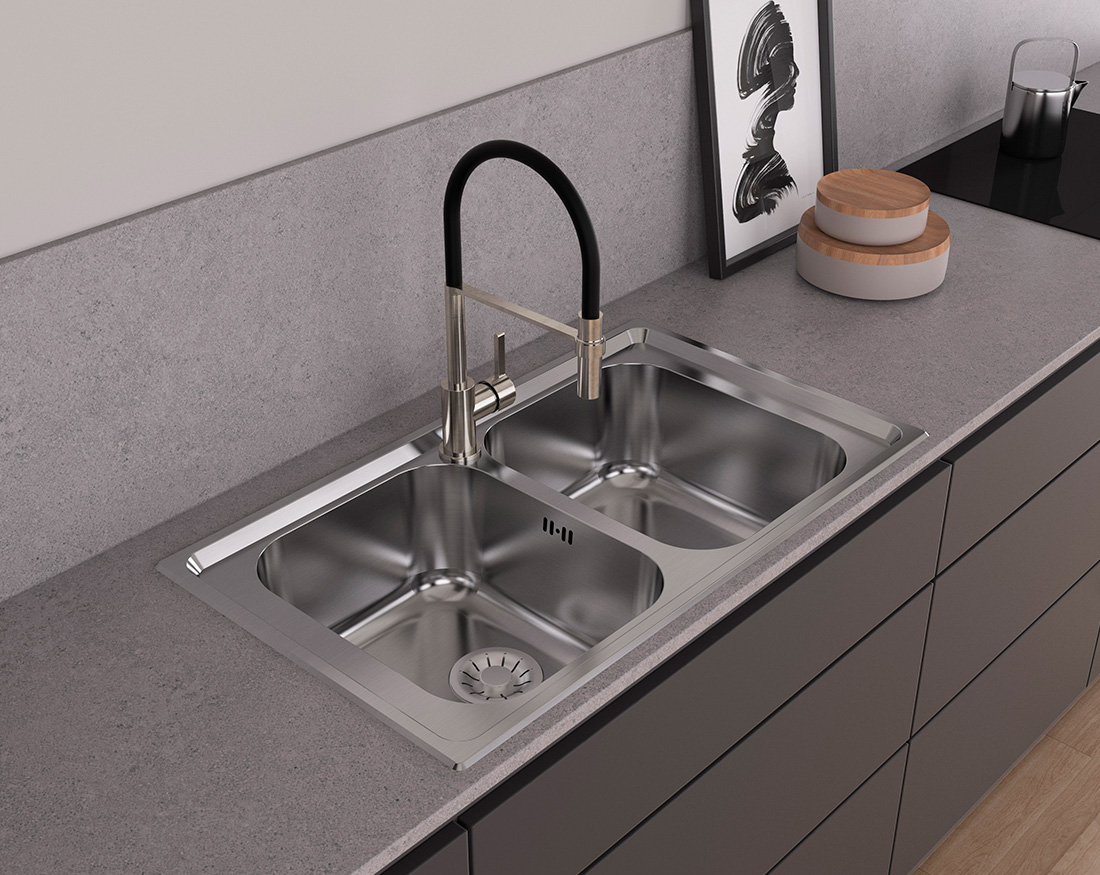Why choose a stainless steel sink?

Are you buying a new sink for your kitchen or renovating and seeking something innovative yet low-maintenance? You must have encountered several options to evaluate. Increasingly, people are opting for stainless steel sinks, and here’s why.
In this article, we’ll explore the various advantages of stainless steel and its applications in sink manufacturing.
Here’s a brief outline of what we’ll cover:
Why Choose a Stainless Steel Sink?
If you're considering renovating your kitchen or replacing the old sink, stainless steel emerges as a versatile and reliable material, ideal for meeting the needs of a modern kitchen.
Its resistance to corrosion and stains makes it perfect for high-traffic areas like the kitchen. Additionally, stainless steel is easy to clean and requires minimal maintenance, ensuring long-term durability.
With its clean and contemporary aesthetic, it seamlessly integrates with any décor style. Discover all the reasons to choose stainless steel for your next sink and transform your kitchen into a functional and stylish space.
Resistance and Durability of Stainless Steel Sinks
One of the main reasons stainless steel sinks are a good choice is their incredible durability over time. Stainless steel is renowned for its ability to resist corrosion, stains, and impacts, making it perfect for a kitchen subjected to demanding conditions. Due to its robustness, a stainless steel sink can withstand weather elements and temperature fluctuations without significant damage.
However, it's important to handle this material delicately during cleaning operations, as any scratches can compromise its integrity and cannot be easily repaired.
Choosing a stainless steel sink means investing in an element that not only seamlessly integrates with the kitchen's style but also offers reliable and long-lasting performance.

Ease of Cleaning and Hygiene of Stainless Steel Sinks
Another key advantage of stainless steel sinks is their ease of cleaning and ability to maintain high hygiene standards. Thanks to the smooth and non-porous surface of the material, it's easy to remove food residues and stains with a mild detergent and soft cloth, or by using natural solutions like vinegar. This feature makes cleaning stainless steel sinks a quick and hassle-free task, without the need for aggressive chemical products.
Additionally, stainless steel is a material that doesn't absorb unpleasant odors, helping to keep your kitchen fresh and fragrant at all times, which is particularly advantageous during the preparation of aromatic foods or dishes with intense fragrances.
Versatility and Design of Stainless Steel Sinks
A stainless steel sink blends beautifully with a wide range of décor styles, ranging from modern to traditional. This is due to some distinguishing features:
Minimalism: Stainless steel sinks have a clean and minimal design.
Design Flexibility: These sinks can be integrated into any type of environment, adding elegance and functionality.
Color: The natural color of steel is perfect for any style.
These features translate into design flexibility that allows integrating the stainless steel sink into any type of environment, providing a touch of elegance and functionality that perfectly suits the surrounding context, regardless of the predominant style.
In-set or Undermount: What's the Difference?
The main difference between an overmount sink and an undermount sink, whether in stainless steel or other materials, concerns how they are installed in the kitchen countertop.
An in-set sink, as the name suggests, is installed above the kitchen countertop. This type of installation involves the sink's edge being visible and protruding above the countertop.
Usually, the overmount sink is easy to install and can be a cost-effective option.
In contrast, an undermount sink is installed beneath the kitchen countertop. In this case, the sink's edge is hidden under the countertop, making the sink itself integrated into the countertop. This type of installation offers a cleaner and more modern look, as the sink appears as an integral part of the countertop without any visual interruptions.
So, the main difference between an in-set sink and an undermount sink is the appearance and installation method in the kitchen countertop, with the undermount sink offering a more elegant and integrated look than the overmount sink.
Stainless Steel Sinks: The Ideal Choice
Choosing a stainless steel sink comes with a range of advantages. Resistance, durability, ease of cleaning, and versatility are just some of the reasons why more and more people are opting for this material in their kitchen. If you're looking for a sink that combines excellent performance with elegant design, the stainless steel sink is definitely the ideal choice to consider.
